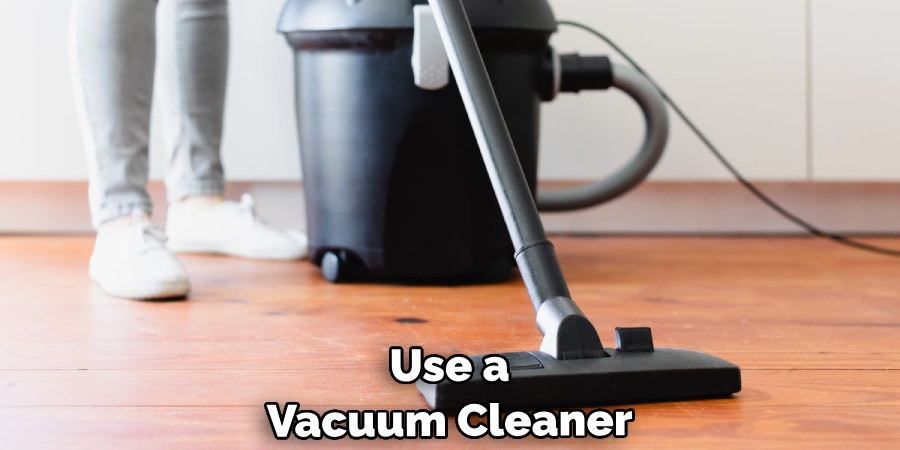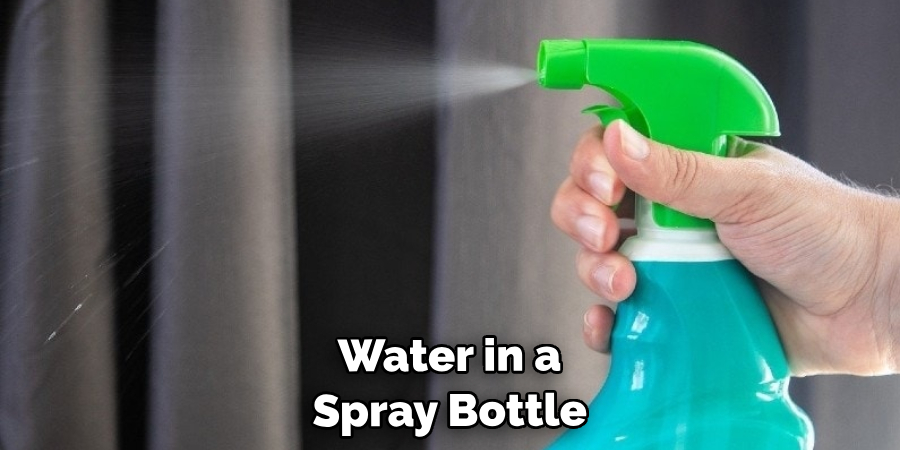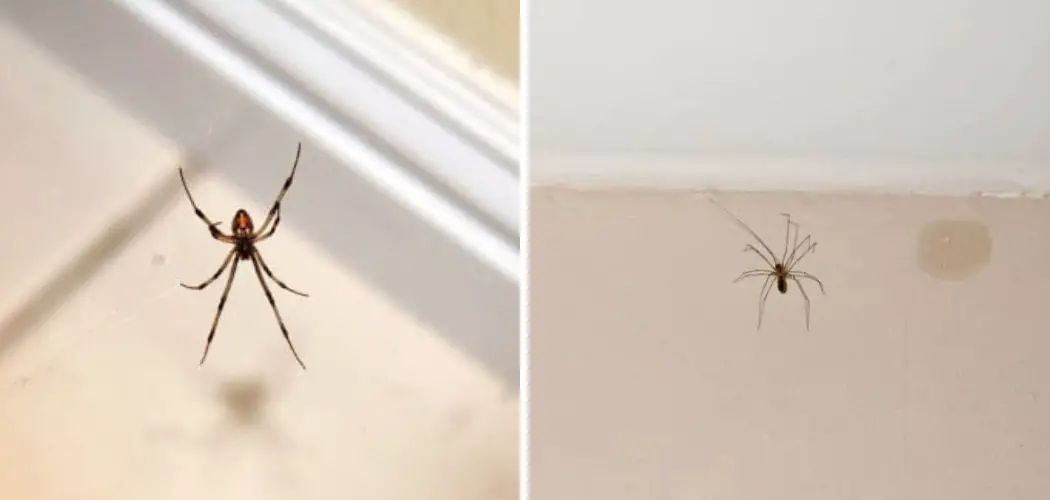Do you have a fear of spiders? Are there unsightly webs on your ceiling that won’t seem to go away no matter how much you clean? If so, don’t worry! You can rid your ceilings of these eerie creepers and make them look good as new.

Whether you’re dealing with just a few spiderwebs or looking to eliminate an entire infestation, here are some tips to help you eliminate spiders on your ceiling.
In this blog post, we’ll be exploring some easy and efficient strategies for how to get rid of spiders on ceiling that are both effective and affordable. So if unwanted arachnids are giving you the chills, keep reading for our top tips on banishing spiders from your home ceiling once and for all!
What Will You Need?
Before we get into the steps of getting rid of spiders on the ceiling, let’s first ensure you have all the necessary tools and materials. Here are some items you may need:
- Vacuum cleaner
- Insecticide
- Spider traps
- Mothballs
- Peppermint oil or white vinegar
Now that you’ve all the necessary supplies, you’re ready to start.
10 Easy Steps on How to Get Rid of Spiders on Ceiling
Step 1. Vacuum Cleaning
The first step to removing spiders on the ceiling is to use a vacuum cleaner with an extendable nozzle. This will allow you to reach up and suck up any webs or spiders that may be lurking in corners or crevices. If you don’t have a vacuum cleaner, you can use a broom or dustpan to sweep away any webs on the ceiling.

Step 2. Insecticide
The next step is to use an insecticide to kill any spiders hiding away in hard-to-reach places. Be sure to follow the manufacturer’s instructions and take all necessary precautions to protect yourself and your family.
Step 3. Spider Traps
Spider traps are a great way to catch spiders, as they contain sticky adhesives that spiders fall into and cannot escape from. You can purchase traps at most home and garden centers or online stores. Place the traps in areas where you think spiders may be hiding out, such as dark corners
Step 4. Mothballs
Mothballs repel not only moths but also spiders due to their strong scent. Place a few mothballs in corners, behind furniture, and in other areas where spiders are likely to hide. Be cautious while using them if you have pets or children at home, as mothballs are toxic if ingested. Refresh them every few months for continuous protection.
Step 5. Peppermint Oil or White Vinegar
Spiders detest the smell of peppermint and vinegar. You can create a homemade spider repellent by mixing a few drops of peppermint oil with water in a spray bottle or by diluting white vinegar with water. Spray this solution in corners, walls, and other places where spiders might lurk. This deters spiders from returning to your ceiling and keeps your house smelling fresh and clean. Remember to avoid spraying directly on fabrics or surfaces that might get stained or damaged.

Step 6. Regular Cleaning
Regular cleaning is essential to discourage spiders from setting up the house on your ceiling. This includes dusting and vacuuming your ceilings at least once a week to prevent the build-up of webs. Regular cleaning also removes any potential food sources for spiders, such as small insects. This step requires a proactive approach but can go a long way in maintaining a spider-free ceiling.
Step 7. Seal Cracks and Gaps
Spiders often find their way into homes through small cracks and gaps in walls, windows, and ceilings. Inspect your home for openings and seal them using caulk or another appropriate filler. This preventative measure not only helps remove spiders on ceilings but also prevents them from entering your home in the first place.
Remember to pay special attention to areas around pipes, vents, windows, and doors. Conducting a thorough inspection and sealing process once a year can significantly reduce the likelihood of a spider infestation in your home.
Step 8. Use Natural Predators
Consider promoting the presence of natural predators of spiders, such as birds or certain species of wasps. You can construct birdhouses or plant specific flowers to attract these creatures to your yard. This strategy leverages nature’s own mechanisms for controlling spider populations. While this might not be effective for spiders on ceilings indoors, it can help reduce the overall spider population around your home and thus minimize their migration indoors.

Step 9. Professional Pest Control
If the spider infestation on your ceiling proves to be extensive or particularly stubborn, it may be time to call in professional help. Pest control services have the expertise, equipment, and resources to safely and effectively handle larger infestations.
They can also provide valuable advice on long-term preventative measures to keep your ceilings spider-free in the future. Remember, safety is paramount, and it’s better to seek professional help than to risk your health or damage your property in your attempts to get rid of the spiders.
Step 10. Regular Inspection and Maintenance
The last step in keeping your ceilings spider-free is regular inspection and maintenance. This includes routinely checking for signs of spider activity, such as webs or egg sacs, particularly in darker and less frequently visited areas of your home. Additionally, maintaining a clean, clutter-free home environment can deter spiders from taking up residence in the first place.
You can consistently enjoy a home free from unwelcome eight-legged visitors by following these steps. With a few simple steps and regular maintenance, you can be sure your ceilings are spider-free for years to come.
5 Additional Tips and Tricks
- Place cloves near corners and other spider-prone areas. Spiders naturally avoid the smell of cloves, so scattering a few around your home can effectively deter them from coming in.
- Use citrus peels to repel spiders on ceilings as well as other surfaces. The powerful scent of citrus fruits will make spiders think twice before entering your home.
- Give your windows and doors a thorough cleaning at least once a month to ensure spiders cannot enter your home.
- Introduce predatory insects such as praying mantises into your yard to help reduce the spider population around your house.
- Be sure to regularly check for any signs of spider activity, including webs or egg sacs, and act quickly to get rid of the infestation.
By following these tips and tricks and the steps outlined above, you can keep your ceilings spider-free for good!
5 Things You Should Avoid
- Don’t use bug spray or other chemicals to remove spiders on ceilings. Not only are these products harmful to the environment, but they can also leave residue and cause damage to your home.
- Avoid leaving food scraps around your home, as this can attract spiders and other pests.
- Never swat at a spider or try to catch it with your bare hands. This can result in injury from its bite or other harm, and the spider will likely scatter and hide rather than be removed.
- Refrain from using open flames or fire to eliminate spiders on your ceilings, as this can cause a serious fire hazard.
- Pay attention to regular cleaning and inspection of your home for signs of spiders. This is essential in keeping your ceilings free of spiders and other pests.
By avoiding these five things, you can ensure that your spider problem stays under control without putting yourself or your home at risk!
Why is There a Spider on My Ceiling?
Spiders on ceilings are actually quite common – and often harmless. Most of the time, they come in looking for food or shelter. When there’s a surplus of insects around, spiders can easily find themselves with access to an inviting ceiling! It’s important to watch for signs of spider activity and act quickly if you suspect an infestation.
In addition to the steps outlined above, you should ensure that your home is well-ventilated and free of clutter. Spiders are attracted to warm, dark spaces where they can easily hide from predators – so keeping your home tidy and organized can help reduce their presence.
By following these tips and strategies, you can be sure that your ceilings stay spider-free for good!
Do Spiders Hate Lemon?
Yes, spiders do generally dislike the smell of lemon. This is because they use their sense of smell to locate prey, and many scents can be quite unappealing to them. Citrus fruits like lemons are among these scents, so you can take advantage of this by placing lemon peels around areas where you suspect spider activity or creating a citrus mist to spray on your ceilings and walls. This can help deter spiders from entering or staying in your home.

Though lemon is a good natural solution for getting rid of spiders, it’s important to remember that other methods should also be used in tandem with it for best results. Regular inspection and maintenance, sealing cracks and crevices around windows and doors, and using professional pest control services if necessary are all essential steps in keeping spiders off your ceilings – and lemon can be an effective addition to the strategy.
In conclusion, while spiders may not love the smell of lemons, they certainly don’t like it – so it’s a great tool to add to your arsenal when removing spiders on ceilings!
Conclusion
Hopefully, this article has been a useful source of information on how to get rid of spiders on ceiling! Getting rid of them may take time, patience, and some trial and error, but it is possible.
Don’t be alarmed if you notice the occasional spider web or insect in your home; these are natural and a part of any home’s environment. Taking proactive steps to keep your home clean and free of clutter will help in preventing future infestations of spiders or other pests.
If your methods don’t seem to be succeeding in getting rid of all the spiders, consider seeking professional pest control advice or services. Good luck, stay safe, and happy spider-free living!
About
Angela is the chief editor of Indoorense. She began her career as an interior designer before applying her strategic and creative passion to lifestyle and home.
She has close to 15 years of experience in creative writing and online content strategy for housekeeping and cleaning,home decorations as well as other efforts.
She loves her job and has the privilege of working with an extraordinary team. She lives with her husband, two sons, and daughter in Petersburg. When she’s not busy working she spent time with her family.

